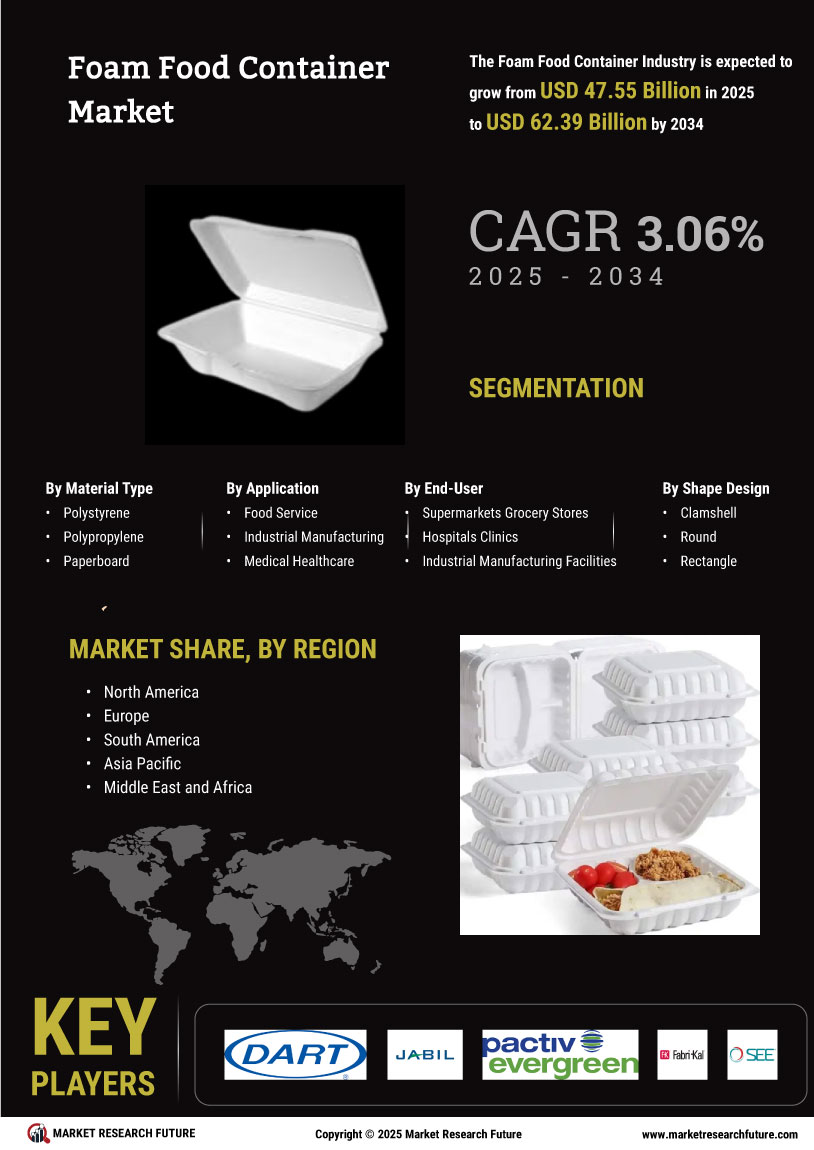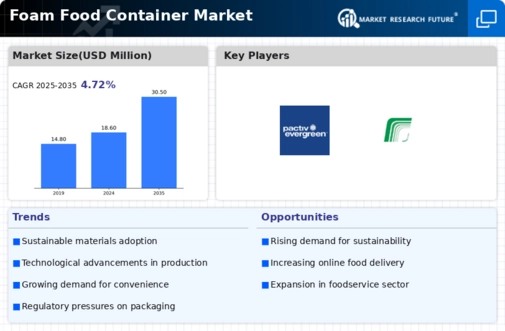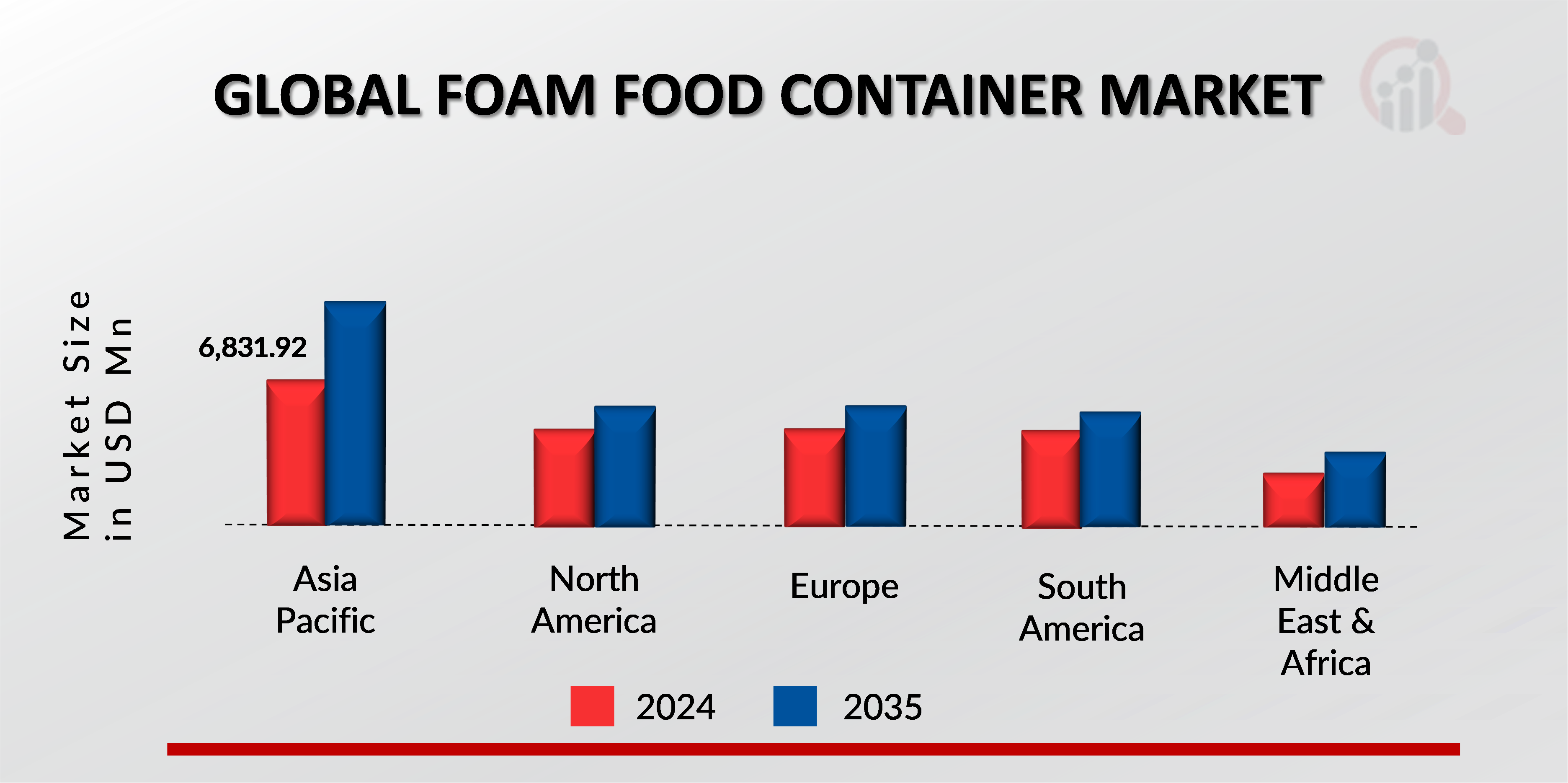Market Growth Projections
The Global Foam Food Container Market Industry is poised for substantial growth, with projections indicating a compound annual growth rate (CAGR) of 4.58% from 2025 to 2035. This growth trajectory reflects the increasing adoption of foam containers across various sectors, including foodservice, retail, and catering. The market is expected to evolve in response to changing consumer preferences and technological advancements, leading to innovative product offerings. As the industry adapts to these dynamics, stakeholders are likely to benefit from enhanced market opportunities and improved profitability.
Sustainability Initiatives
Sustainability initiatives are becoming a pivotal driver within the Global Foam Food Container Market Industry. As environmental concerns rise, there is an increasing push for eco-friendly alternatives to traditional foam containers. This shift is prompting manufacturers to explore biodegradable and recyclable materials, aligning with global sustainability goals. For instance, several companies are investing in research to develop foam containers that minimize environmental impact while maintaining functionality. This trend not only addresses consumer preferences but also complies with regulatory pressures aimed at reducing plastic waste. The industry's evolution towards sustainable practices is likely to shape its future trajectory significantly.
Growth in Food Delivery Services
The Global Foam Food Container Market Industry is significantly influenced by the expansion of food delivery services. With the proliferation of online food ordering platforms, there is a heightened demand for packaging that ensures food safety and quality during transit. Foam containers are favored for their ability to retain heat and prevent spillage, making them ideal for various cuisines. As the food delivery market continues to grow, projected to reach 30.5 USD Billion by 2035, the need for reliable packaging solutions will likely drive further innovation in foam food containers, enhancing their market position.
Rising Demand for Convenient Packaging
The Global Foam Food Container Market Industry experiences a surge in demand for convenient packaging solutions. As consumers increasingly seek ready-to-eat meals and takeout options, foam food containers provide an ideal solution due to their lightweight and insulating properties. This trend is particularly evident in urban areas where busy lifestyles drive the need for portable food options. The market is projected to reach 18.6 USD Billion in 2024, reflecting the growing preference for convenience in food consumption. Consequently, manufacturers are focusing on producing innovative designs that cater to this demand, thereby enhancing the overall market landscape.
Regulatory Compliance and Safety Standards
Regulatory compliance and safety standards are critical drivers within the Global Foam Food Container Market Industry. Governments worldwide are implementing stringent regulations regarding food safety and packaging materials, necessitating that manufacturers adhere to specific guidelines. This compliance ensures that foam containers are safe for food contact and do not leach harmful substances. As a result, companies are investing in quality assurance processes and certifications to meet these standards. This focus on safety not only protects consumers but also enhances brand reputation, thereby influencing purchasing decisions and fostering market growth.
Technological Advancements in Manufacturing
Technological advancements in manufacturing processes are reshaping the Global Foam Food Container Market Industry. Innovations such as automated production lines and improved molding techniques are enhancing efficiency and reducing costs. These advancements enable manufacturers to produce high-quality foam containers at a faster rate, meeting the increasing demand from the foodservice sector. Furthermore, the integration of smart technologies in production processes allows for better quality control and customization options. As the market evolves, these technological improvements are expected to play a crucial role in maintaining competitiveness and meeting consumer expectations.














Leave a Comment